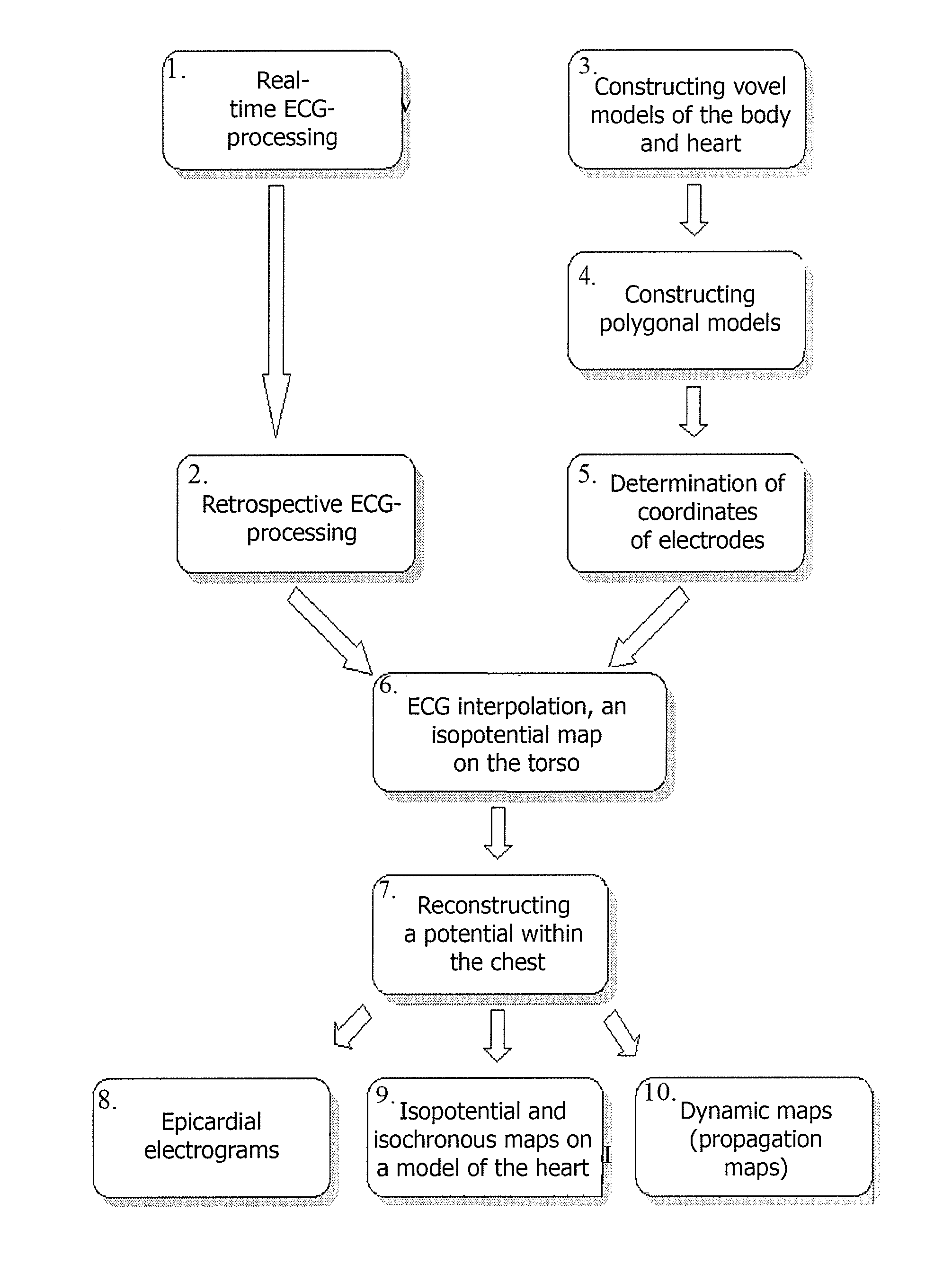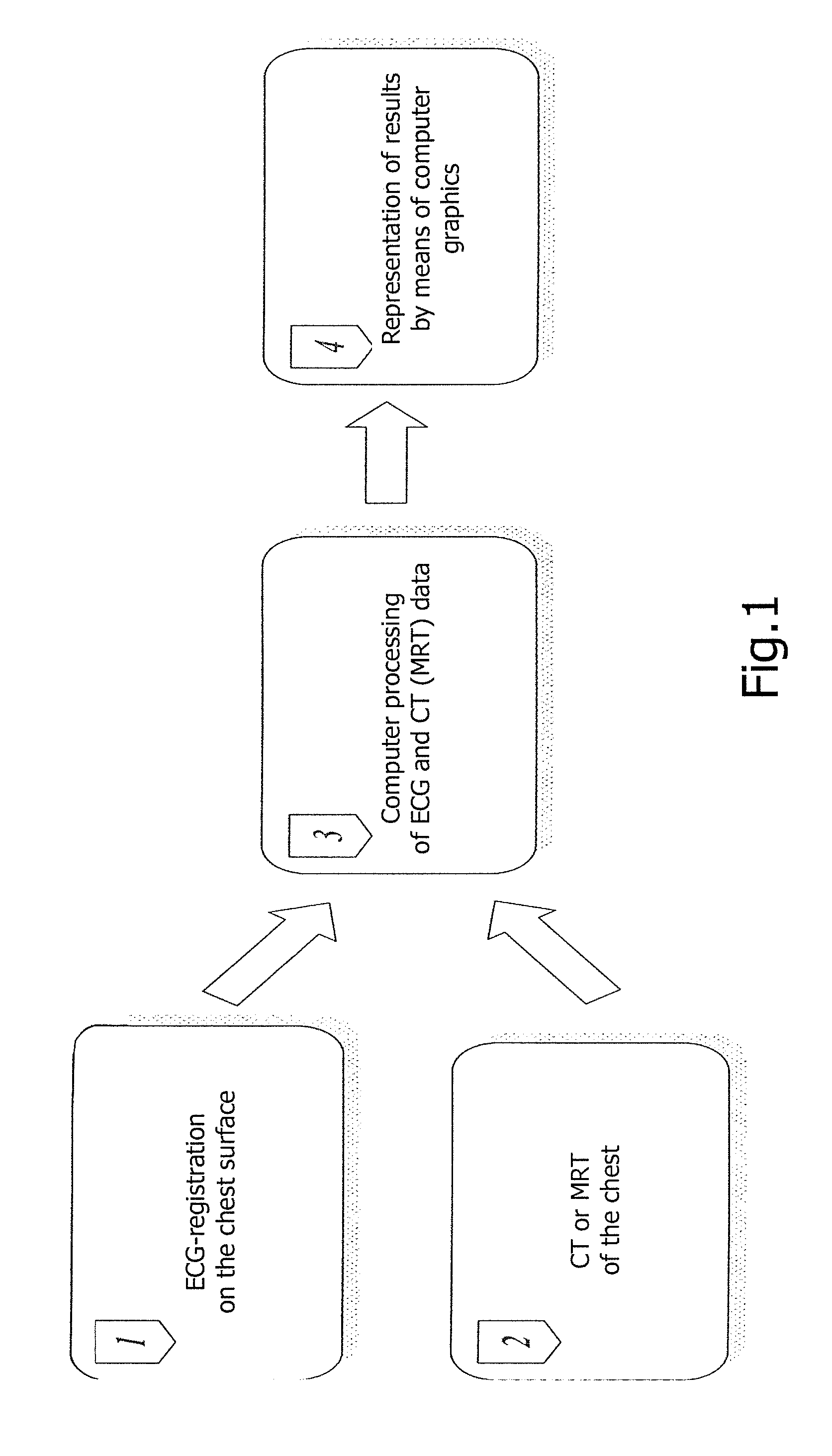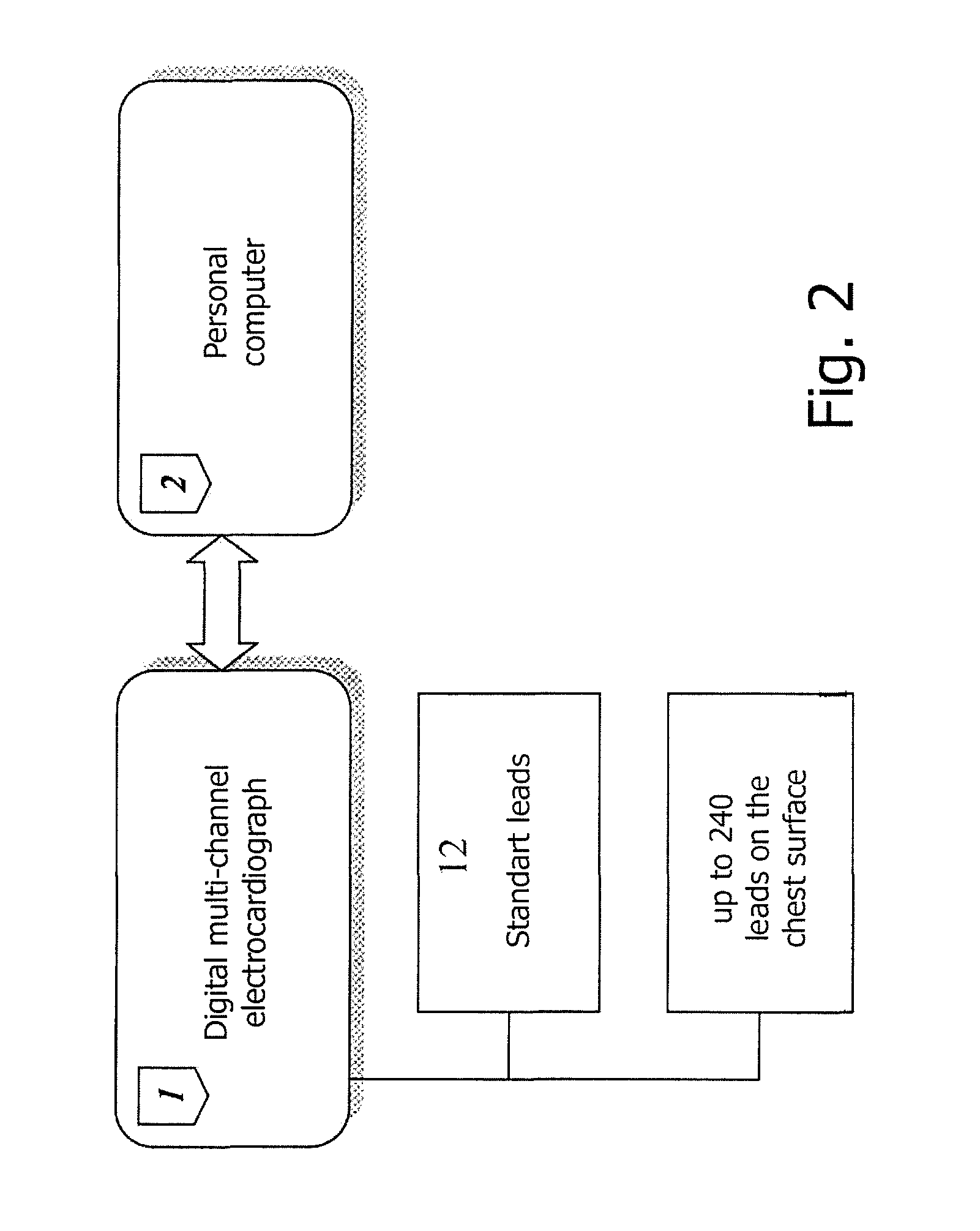Method of noninvasive electrophysiological study of the heart
a non-invasive, electrophysiological study technology, applied in the field of medicine, can solve the problems of insufficient reflection of the activity of certain compartments of the myocardium in the electrocardiographical signal registered, the inability to determine the local electric activity of the myocardium on standard ecg-leads, and the principled limitations of the electrocardiographical method, so as to improve the accuracy of the method and increase the rate of calculation
- Summary
- Abstract
- Description
- Claims
- Application Information
AI Technical Summary
Benefits of technology
Problems solved by technology
Method used
Image
Examples
Embodiment Construction
[0066]To provide a comprehensive understanding of the invention, its specific illustrative embodiments are described below; however, those of ordinary skill in the art will recognize that methods and systems may be modified within the scope of the invention as defined by the appended claims.
[0067]Methods and systems disclosed here use a device of surface ECG mapping, visualization techniques for CT or MRT, computing techniques, as well as mathematical algorithms of solution of the inverse problem of electrocardiography for noninvasive reconstructing electrograms at internal points of the chest and on heart epicardial surface and for constructing isopotential and isochronous epicardial maps on a realistic three-dimensional (3-D) computer model of the heart.
[0068]FIG. 1 illustrates a general schematic view of the method. The method includes (1) a registration of 240 unipolar ECG on the chest surface, (2) an implementation of CT or MRT of the chest, (3) data processing of surface ECG m...
PUM
 Login to View More
Login to View More Abstract
Description
Claims
Application Information
 Login to View More
Login to View More - R&D
- Intellectual Property
- Life Sciences
- Materials
- Tech Scout
- Unparalleled Data Quality
- Higher Quality Content
- 60% Fewer Hallucinations
Browse by: Latest US Patents, China's latest patents, Technical Efficacy Thesaurus, Application Domain, Technology Topic, Popular Technical Reports.
© 2025 PatSnap. All rights reserved.Legal|Privacy policy|Modern Slavery Act Transparency Statement|Sitemap|About US| Contact US: help@patsnap.com



